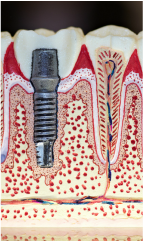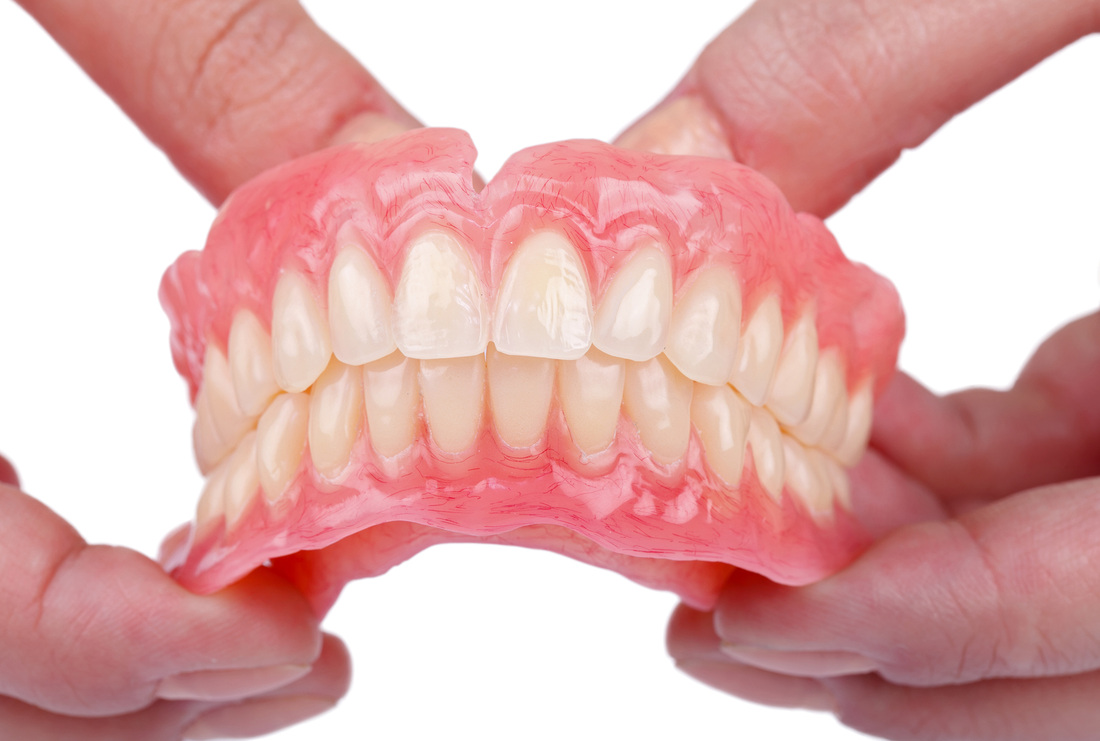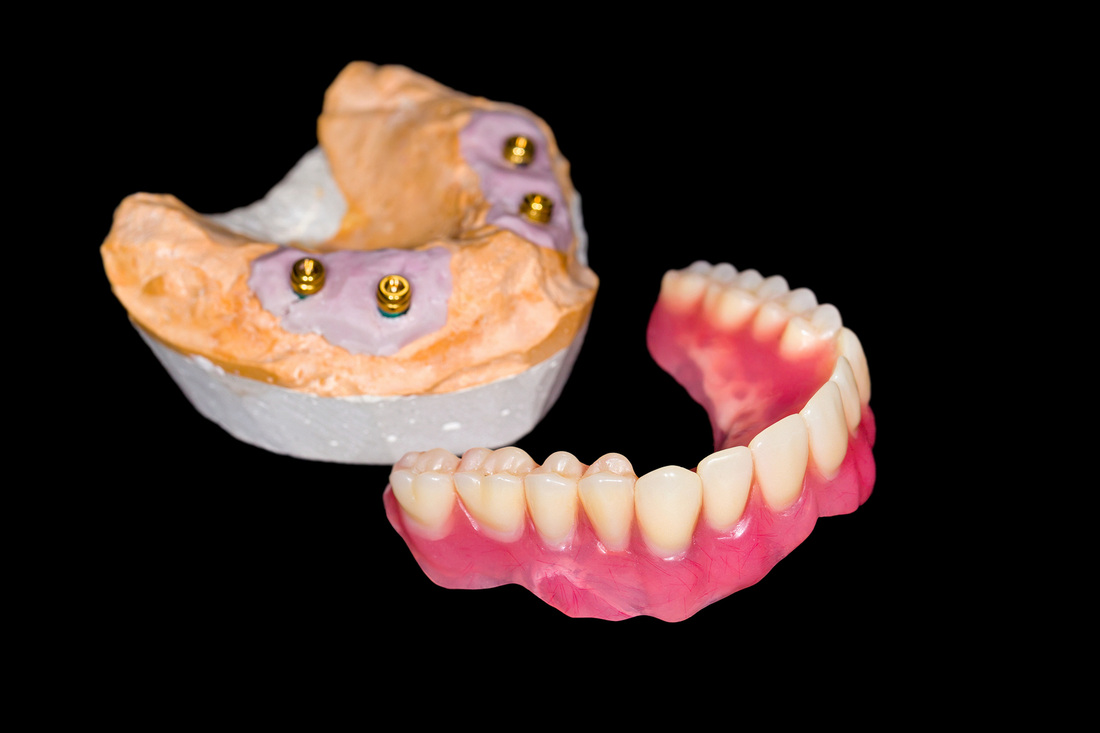Here you will find everything you need to know about replacing missing teeth so you are in the best position to decide what is best for you.
Replacing a Single Tooth
|
Here you have 5 options:
1. Denture - This is the least expensive, most straightforward removable option i.e. you will be able to take it in and out of your mouth. The tooth being replaced will look like your own tooth unless inspected very closely. It will not feel like your natural tooth as it will not be fixed in place and will often rely on friction to keep it in place. For some patients this is fine, for others they may have one of these as a temporary solution to replace the tooth whilst the gum is healing following an extraction. This can be an acrylic (plastic) option which usually has to cover your palate if on the top or be quite big in order to keep it in place on the bottom; or a flexible or a metal based version which can be small enough to be the size of one tooth with clasps on either side which clip onto the adjacent teeth. 2. Implant - this is the most tooth-like solution available and consists of a specialised titanium screw (the implant) that is inserted into the bone where the root of tooth would have been, essentially replacing it.This is left for a couple of months to integrate with your jaw bone then an attachment is attached to it and then a conventional crown as described in the crowns section sits over the top of this and is cemented or screwed into place, it will look and feel like your tooth and sometimes can look better than what was there originally. |
3. Conventional Bridge - This is where the tooth adjacent to the gap or the teeth either side of the gap are prepared (cut back) to have crowns on them and then a bridge which is essentially two or more crowns joined together is used to replace the tooth.
4. Bonded Bridge - This is where a a little metal or sometimes white ceramic wing is bonded onto the back of the tooth adjacent to the gap which has a false ceramic tooth bonded to it, it is made in the same way as a conventional bridge but means the teeth either side don't need to be cut back so much just to replace the missing tooth 5. Leave it as a gap - which is the preferred option of some patients |
So those are the options - but we are no further along in your decision so we will discuss the Pros and Cons of each and you can decide for yourself which option to go for?
Denture
Low cost, quick, easy, no extra tooth structure is removed but can feel bulky, can have some movement in when eating, can take a lot of getting used to, not for the more discerning patient or if you want to feel like your tooth is back again but perfectly suitable for function i.e. eating and rare that anyone besides a dentist would be able to tell you have a denture in. Needs to be removed at night and cleaned. Especially difficult to wear if strong gag reflex
Implant
Most tooth-like solution, fixed in place, will feel like your natural tooth is back. No other tooth structure removed from adjacent teeth. is a more costly solution at around £2000 - £4000 per tooth but really is an excellent replacement for a missing tooth. As it involves a minor surgical procedure and sufficient height of bone around the area to support the implant then some patients may need additional procedure to increase the amount of bone available to hold the implant or due to medical conditions should not have the surgical procedure at all and so opt for one of the alternatives
Dental Bridge
This is the least conservative option as it requires preparing adjacent teeth for crowns to support the replacement of the missing tooth. If the adjacent teeth are already crowned (have crowns on) then this may be the preferred option as no additional tooth structure requires removal. This option will generally be the cost of two or three crowns depending on whether it is supported by just one tooth or one tooth either side of the gap.
Bonded Bridge
This is a very conservative option and sometimes requires either no preparation of the adjacent tooth or about 0.5mm removed off the back of one adjacent tooth just to make room for the little wing to bond onto the back of this tooth. This option can be a little unpredictable and is not possible if the adjacent tooth has any large fillings in or is crowned already as it requires a big area of fresh tooth surface to bond in place properly. Cost of these is the same as 1.5 crowns generally and a little more for a white ceramic wing over a metal one. if these do come off they don't do any damage and can be treated and bonded back in place. They are often used as long term temporary solutions with a view to a definitive implant in the future.
Leave as a gap
This option obviously is free and generally if most of your other teeth are intact then it does not cause any major problems. depending on where the gap is it may be unsightly or the teeth either side may lean inwards towards the gap which in some cases can cause problems with how your teeth bite together but your dentist will be able to give you an idea of the likelihood of such problems.
Replacing Multiple Teeth
Here there are two main options as I will describe below, bridges are sometimes possible for upto 2 missing teeth but to replace any more than that bridges that will last a decent amount of time are not really a viable option.
DenturesThese are full dentures (false teeth) supported by the gums only, the top ones will largely rely on suction due to being a very close fit, the lower ones rely a lot on training yourself to keep them in place whilst eating and talking.
These can be made of a normal acrylic as in the picture below, a flexible material as can be seen here or have a thin metal base (but this would usually require a number of remaining teeth to support it) Generally the acrylic dentures will be least expensive but still vary from health service fees to around £1000 or more for a good set. The metal based dentures may be more suitable to replace just some missing teeth as they are thinner and do not cover over all of your palate and gums; so there is less risk of subsequent gum problems. The flexible dentures are a good option for replacing just some teeth as the clasps are clear or gum coloured as the metal clasps are sometimes visible. one partial metal denture will usually cost around £500 and a flexible one a similar fee if not a little more expensive. |
Implant RetainedThis is where people who are missing all of their teeth can have them replaced with a stable option that doesn't rock or move when eating and talking.
The two options are to have 1. Conventional dentures are made and then a number of implants are placed which the dentures either lock onto, are screwed onto or have magnetic attachments to. You would usually need a minimum of four implants in the top and two in the bottom. This is a particularly good solution for patients who have a good top denture but have a very loose lower denture and are having trouble eating/keeping it in place; fees will be around £4000 to place the lower two implants and make a new denture which is completely stable 2. Crown and Bridges supported by implants all the way round which will require about 6-8 implants in the top and bottom at least and then the crown and bridgework is made to be screwed or cemented onto this. This is the most tooth- like option and as a result of the additional implants and crown and bridgework requires the largest investment, A good estimate is to assume around £2300 per implant and crown and usually 12 teeth would be placed on the top and bottom. |


